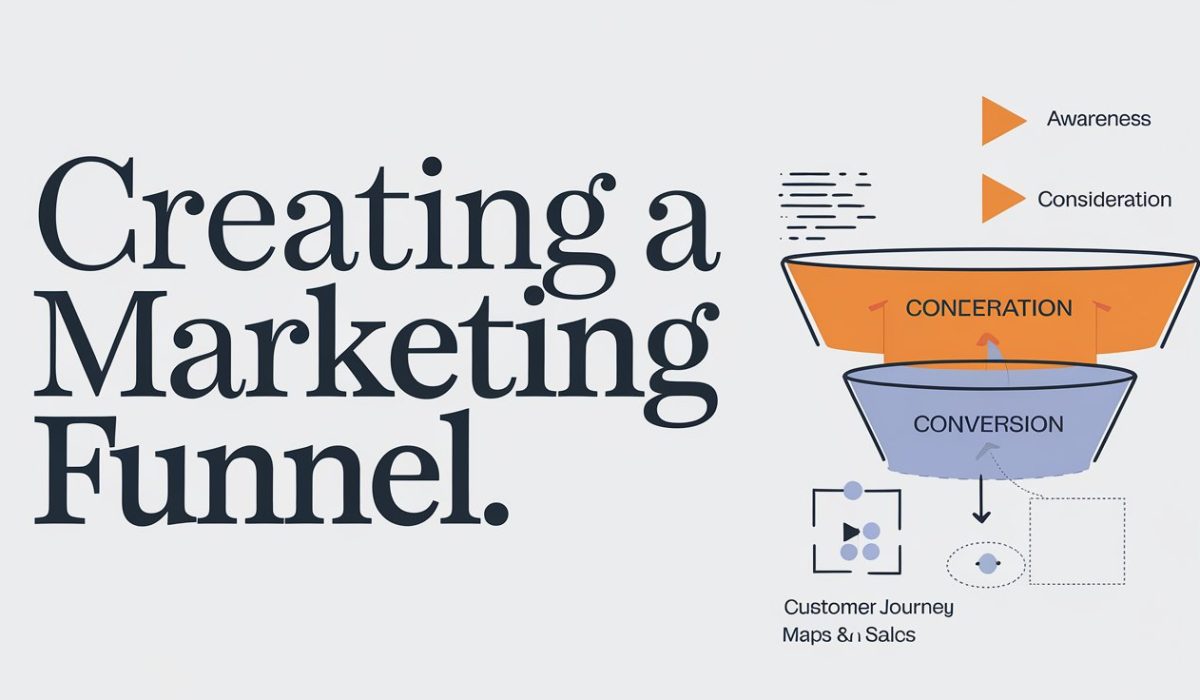Creating a Marketing Funnel: A Step-by-Step Guide to Boost Your Sales
A marketing funnel is a powerful tool that guides potential customers through the stages of awareness, consideration, and decision-making, ultimately leading to a purchase. By understanding and implementing an effective marketing funnel, businesses can optimize their marketing efforts and increase conversions. This guide outlines the steps to create a successful marketing funnel tailored to your business.
1. Understanding the Marketing Funnel
The marketing funnel represents the journey a customer takes from the first interaction with your brand to the final purchase. It typically consists of several stages:
- Awareness: Potential customers become aware of your brand and offerings.
- Interest: Customers show interest in your products or services and seek more information.
- Consideration: Prospects evaluate your offerings against competitors.
- Intent: Customers express intent to purchase.
- Purchase: The final decision is made, and the customer buys your product or service.
- Loyalty: After the purchase, efforts continue to retain customers and encourage repeat business.
2. Define Your Target Audience
Before creating a marketing funnel, it’s essential to understand your target audience. Identify their demographics, needs, preferences, and pain points. This information will help you tailor your messaging and strategies at each stage of the funnel.
3. Map Out the Funnel Stages
Outline the specific actions and content you want to provide at each stage of the funnel:
a. Awareness Stage
At this stage, the goal is to attract potential customers and generate awareness. Strategies may include:
- Content Marketing: Create informative blog posts, videos, and infographics that address your audience’s pain points.
- Social Media Marketing: Share engaging content on platforms where your target audience is active.
- Paid Advertising: Use PPC ads to reach a broader audience and drive traffic to your website.
b. Interest Stage
Once potential customers are aware of your brand, nurture their interest through:
- Email Marketing: Send newsletters with valuable content and insights related to their interests.
- Webinars and Live Demos: Offer informative sessions showcasing your products or services.
- Lead Magnets: Provide free resources (e.g., eBooks, guides) in exchange for contact information.
c. Consideration Stage
Help prospects evaluate your offerings by:
- Product Comparisons: Create comparison charts or case studies that highlight your advantages over competitors.
- Customer Testimonials: Share reviews and success stories from satisfied customers.
- Retargeting Ads: Use targeted ads to remind potential customers of your products.
d. Intent Stage
Encourage customers to take action by:
- Special Offers: Provide discounts, promotions, or limited-time offers to incentivize purchases.
- Abandoned Cart Emails: Follow up with customers who left items in their cart with reminders and incentives.
e. Purchase Stage
Make the purchasing process seamless by:
- User-Friendly Checkout: Ensure a straightforward and secure checkout process on your website.
- Clear Call-to-Action (CTA): Use strong CTAs to guide customers towards completing their purchase.
f. Loyalty Stage
After the purchase, focus on retaining customers and encouraging repeat business by:
- Follow-Up Emails: Send thank-you notes and ask for feedback on their purchase.
- Loyalty Programs: Offer rewards or discounts for repeat purchases.
- Regular Engagement: Keep customers engaged through newsletters, exclusive content, and updates.
4. Choose the Right Tools
Utilize marketing automation and CRM tools to streamline your marketing funnel. Some popular tools include:
- Email Marketing Platforms: Mailchimp, ConvertKit, or ActiveCampaign for managing email campaigns.
- Landing Page Builders: Unbounce, Leadpages, or ClickFunnels for creating high-converting landing pages.
- Analytics Tools: Google Analytics or HubSpot to track user behavior and funnel performance.
5. Test and Optimize Your Funnel
Continuously monitor and analyze your marketing funnel’s performance. Look for areas of improvement by:
- A/B Testing: Experiment with different messages, offers, and CTAs to see what resonates best with your audience.
- Analyzing Conversion Rates: Track conversion rates at each funnel stage and identify bottlenecks.
- Gathering Feedback: Collect feedback from customers to understand their experience and make necessary adjustments.
Conclusion
Creating a marketing funnel is essential for guiding potential customers through their buying journey. By understanding your audience, mapping out each funnel stage, and optimizing your strategies, you can effectively increase conversions and drive sales. Remember, a well-structured marketing funnel not only boosts your revenue but also enhances customer relationships, leading to long-term loyalty and success.
